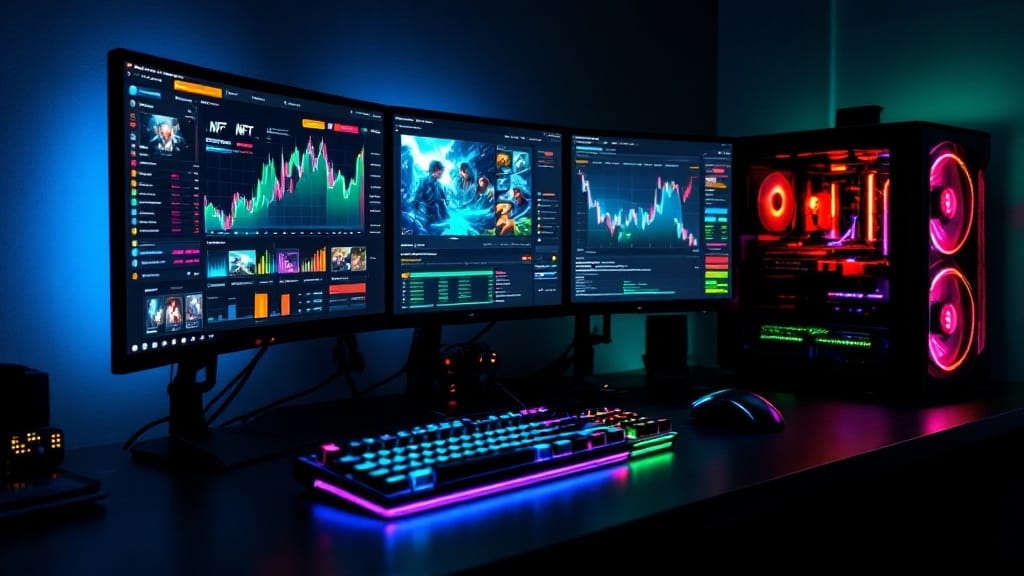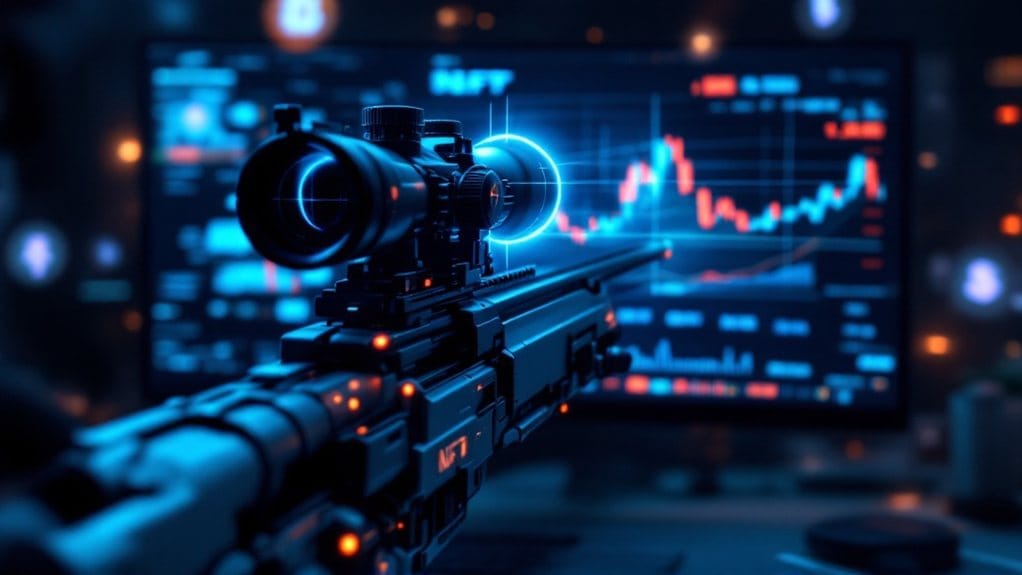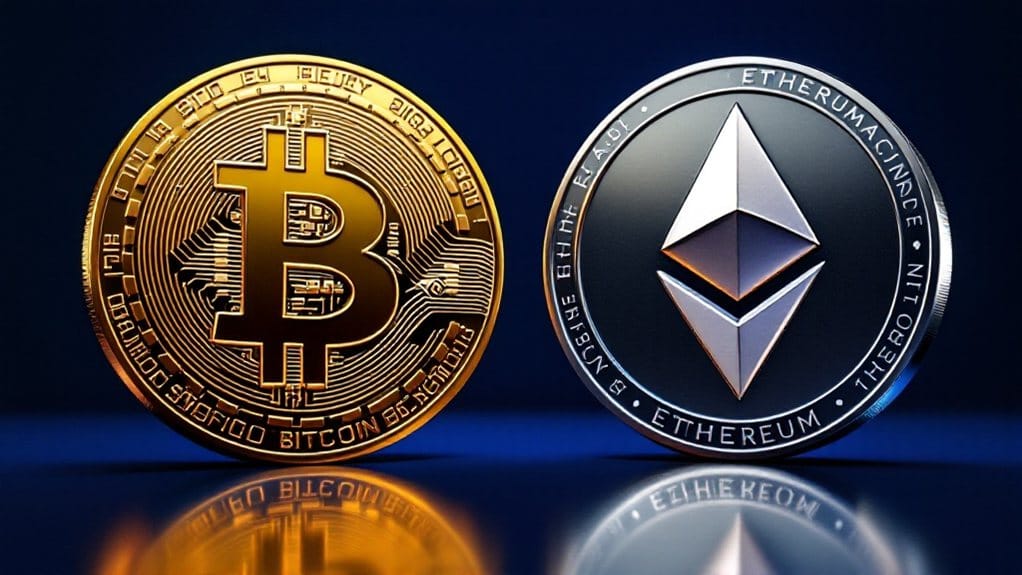NFT sniping involves using automated tools and algorithmic systems to rapidly acquire valuable non-fungible tokens before market recognition. Professional traders employ specialized bots and blockchain scanners to monitor multiple platforms simultaneously, identifying high-potential assets through real-time transaction analysis and rarity metrics. This sophisticated trading strategy requires substantial technical expertise, optimized network connections, and precise timing to execute purchases ahead of mainstream realization. Understanding its mechanics reveals deeper insights into modern digital asset trading.

In the rapidly evolving world of digital assets, NFT sniping has emerged as a sophisticated trading strategy that utilizes automated tools and algorithms to acquire valuable non-fungible tokens at prime moments. This practice involves the deployment of specialized bots and blockchain scanners that continuously monitor NFT marketplaces, seeking opportunities to purchase high-potential assets before they gain widespread attention or appreciation in value.
The core methodology of NFT sniping relies on advanced technological tools that form an integrated ecosystem of market surveillance and rapid execution. Sniping bots, powered by sophisticated algorithms, scan multiple platforms simultaneously, while blockchain scanners track transaction patterns and market movements in real-time. Analytics platforms complement these tools by providing essential data on market trends, rarity metrics, and historical price movements, enabling snipers to make informed decisions within split moments. The rise of online communities has facilitated extensive information exchange among NFT snipers. Similar to staking rewards, NFT sniping requires users to actively participate in the ecosystem to generate returns.
Professional NFT snipers approach their craft with precise strategic planning, leveraging both automated systems and market intelligence to identify potentially valuable tokens. The primary motivation for many traders is achieving substantial capital gains through early acquisition. These traders often participate in online communities where information about upcoming drops and market opportunities is shared, while simultaneously maintaining their proprietary algorithms and trading strategies.
NFT snipers blend sophisticated automation with strategic market insights, collaborating in trading communities while safeguarding their competitive algorithmic advantages.
The practice requires substantial technical expertise, as successful sniping often depends on optimizing network connections and minimizing transaction latency.
The impact of NFT sniping on the broader digital asset marketplace has sparked considerable debate within the community. While proponents argue that sniping represents a legitimate form of market efficiency, critics contend that the practice creates an unfair advantage for technically sophisticated traders. The environmental implications of running continuous automated systems have also raised concerns, particularly regarding energy consumption and blockchain network congestion.
As the NFT market continues to mature, the future of sniping faces potential challenges from regulatory oversight and technological evolution. Marketplace developers are implementing diverse mechanisms to guarantee fairer trading conditions, while blockchain platforms are exploring solutions to address the technical advantages of automated sniping systems.
These developments signal an ongoing transformation in how NFT trading strategies will adapt to an increasingly regulated and sophisticated digital asset ecosystem.
FAQs
Are NFT Sniping Bots Legal to Use on Cryptocurrency Exchanges?
The legality of NFT sniping bots varies by platform and jurisdiction, with no universal regulation governing their use.
While some cryptocurrency exchanges explicitly permit automated trading under specific guidelines, others prohibit bot usage through their terms of service.
Users must carefully review platform policies and local regulations, as bot deployment could potentially violate financial regulations, particularly when used for market manipulation or insider trading activities.
How Much Does It Cost to Set up NFT Sniping Software?
Setting up NFT sniping software typically costs between $50-$500 for basic subscription-based tools, while custom solutions can exceed $5,000.
Monthly operational expenses include marketplace fees (2.5% average), gas fees ($10-100 per transaction), and server costs ($20-200).
Advanced setups incorporating machine learning models and API integrations may require additional investments of $200-1,000 monthly, depending on transaction volume and feature requirements.
Can NFT Sniping Work on All Blockchain Networks?
NFT sniping primarily works on Ethereum-based networks due to their established infrastructure and tools.
While technically possible on other blockchains like Solana, Polygon, or Binance Smart Chain, interoperability challenges and varying transaction speeds can limit effectiveness.
Cross-chain sniping requires specialized tools and faces technical barriers, including different consensus mechanisms and network latencies, making consistent execution more complex across multiple blockchain networks.
What Percentage of NFT Snipes Typically Result in Successful Purchases?
Success rates for NFT snipes typically range between 5-15% across major marketplaces, with experienced snipers achieving higher rates of 20-25%.
Factors affecting success include network congestion, competition from other snipers, and market volatility.
Professional snipers using automated tools and sophisticated algorithms may see success rates up to 30-35%, though these figures vary considerably based on market conditions and timing strategies.
Do NFT Creators Have Methods to Prevent Sniping of Their Collections?
NFT creators employ several effective methods to prevent sniping, including implementing timed-interval auctions that extend bidding periods when late bids occur.
Smart contract configurations can establish fair-launch mechanics with randomized mint times, while whitelist systems restrict early access to verified community members.
Furthermore, creators utilize reservation prices, dutch auctions, and gasless minting to guarantee equitable distribution and reduce the effectiveness of automated sniping tools.









